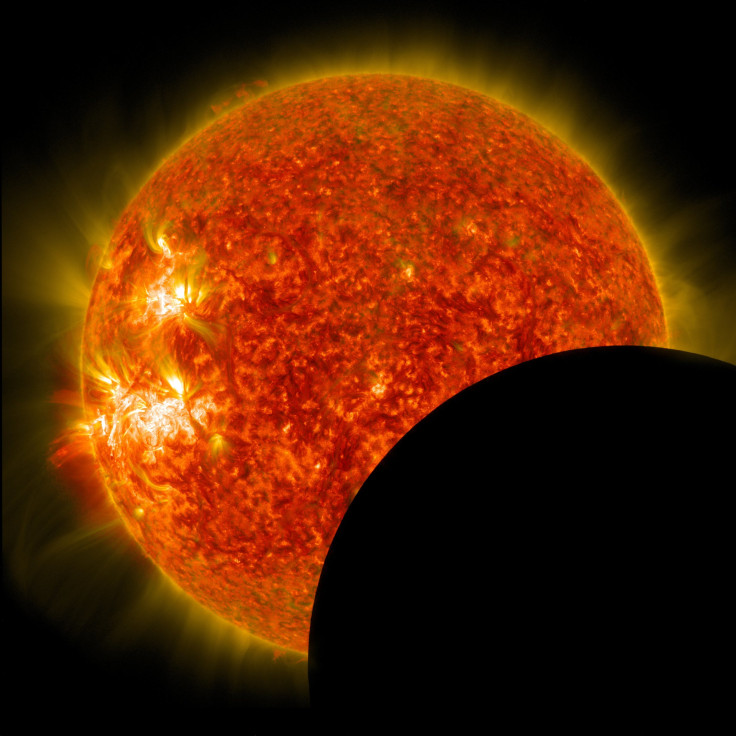Why Aren't Solar Eclipses More Frequent?

The much anticipated solar eclipse that will cast a shadow across 14 states from coast to coast in just two weeks is caused by the moon moving between the sun and the Earth. Its placement in front of the sun is what causes the light to be blocked and the shadow on Earth.
About once a month the moon orbits the Earth and enters the space between the Earth and the sun but total solar eclipses are still rare. The United States hasn’t seen one since 1972. So if the moon moves between the Earth and sun so frequently, why are eclipses so rare?
Read: Total Solar Eclipse August 2017: What It Is, How And Where To See It
It has to do with the moon’s varying orbit, it’s actually tilted. The moon moves higher and lower than Earth during its orbit meaning sometimes the shadow it casts ends up above or below the Earth in space.
If the moon had a stationary orbit, meaning it didn’t move other than orbiting Earth, then it would cast the same shadow on Earth each time is passed between the sun and the planet. If you’re having a hard time visualizing this, NASA created a video to illustrate the way the moon orbits Earth. It shows how most times the moon makes its way around Earth the shadow doesn’t end up on Earth but when it lines up perfect we get a total solar eclipse.
Other planets have total solar eclipses as well. Saturn has 53 confirmed moons and nine more provisional moons. Meaning there are plenty of lunar objects to cause solar eclipses on the gas giant. The Cassini spacecraft was able to snap a photo of a huge shadow cast on Saturn by its moon Titan in 2009.
Read: Solar Eclipse Glasses: Where To Get Your ISO Compliant Pair
The solar eclipse expected on the 21 will only reach totality in 14 states across the country while others will get a partial solar eclipse. NASA is running 11 different experiments to learn more about eclipses and the conditions they cause during the event. The agency is even asking for observers across the country to pitch in and help with the data collection portion of the event. Other experiments include a live stream of the eclipse from massive balloons high in the sky as well as data collection via airplane high in the sky.
If you plan on viewing the eclipse first hand be sure that you have the proper eye protection. You can be sure that the glasses or filter you purchase for the event are going to protect your eyes if they are ISO compliant. This is the safety standard set for such products. You can find these glasses online and in certain stores.
© Copyright IBTimes 2025. All rights reserved.



















